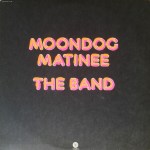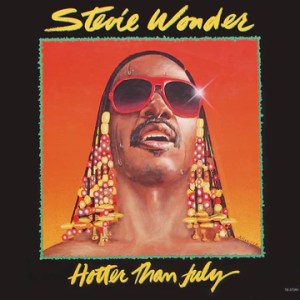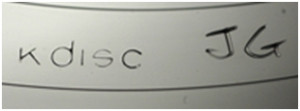 More of the Music of The Rolling Stones
More of the Music of The Rolling Stones
Basic Concepts and Realities Explained
Robert Brook wrote to me recently with some questions about shootouts.
I answered most of them in Part One of this commentary. Here are the questions he posed that remain to be answered.
[I]f you put a shootout together of [redacted stamper] pressings and whatever else you like, does every copy in the shootout grade at least A++ / A++? Are the right stampers that reliable?
I guess I’ve always assumed that even if you put together a shootout with this or any other title, and even if you only include pressings that have won or placed high in the past, at least a couple of them would end up graded no higher than A+ or A+ to A++.
And if that is correct, wouldn’t it be worth buying more UK TML’s to see if any emerge that could win a shootout?
With Revolver, for instance, why not just do shootouts with [the best stampers] if those are the ones that win the shootouts? Why even bother with [later pressings]?
Robert,
First Question
If I may paraphrase, you’re asking, “do the right stampers always get good grades?”
Yes, almost always. It’s rare for any original Sticky Fingers with the right stampers to earn less than a 2+ grade on either side.
This was not always the case. In the early 2000s, we tried and failed more than once to do a shootout for Sticky Fingers. We just could not get the records clean enough. They were noisy and distorted. (Yes, some of the congestion and distortion you hear on old records is simply grunge in the grooves.)
In 2007 we discovered the Walker Record Cleaning System and started using it in combination with a much more sophisticated machine, the Odyssey. As we refined our cleaning techniques, records like Sticky Fingers got a lot quieter and a lot better sounding. Our first shootout occurred soon thereafter.
I still have the ratings for some of those older shootouts saved on a spreadsheet. Even as late as 2016, there were copies with sides that earned grades of 1+ and 1.5+. That would never happen now.
We’ve made so many improvements to our playback system and room that you might say that “no copy gets left behind.” The wrong stampers, sure, they can disappoint. But it’s been a long time since the right ones did.
In those years, we were just catching on to the fact that blaming the record for the sonic problems we might be hearing was a loser’s game. The better our system got, the fewer problems the records we played seemed to have, a subject we discussed in this commentary for Led Zeppelin IV:
Some Led Zeppelin II’s with RL in the dead wax earn grades of 2+, and those are very disappointing grades considering how much we pay for those copies, often over $1000 and sometimes close to $1500. But an RL-mastered pressing earning less than 2+ is just not in the cards. Sure, an uncleaned one could easily grade out to that, or worse. One that was improperly cleaned could even sound terrible. We’ve had records cleaned by so-called experts that made them sound like CDs. I guess that’s the sound they were going for: quiet and unmusical.
Second Question
With Revolver, for instance, why not just do shootouts with [redacted numbers] if those are the ones that win the shootouts? Why even bother with [later pressings]?
The stampers that tend to win shootouts are hard to find. With only the “right” stampers, it might take us 18 to 24 months to find enough clean copies with which to do a shootout. These days we do Revolver twice a year, at least, and this makes our customers happy, because everybody deserves a chance to own a killer copy of Revolver.
As for the others, there are many reasons we bother with pressings we know can’t win a shootout. As I said in Part One, if the Mastering Lab-cut copies were plentiful and cheap, we would probably put some of them in shootouts. If enough earned good grades, 2+ let’s say, then the time and effort to clean and play them might very well be justified. If too many earned grades of 1.5+, that would not be the case. We would be wasting time better spent on pressings we know to have more potential, a classic case of opportunity costs.
Our customers expect to be knocked out by the sound of our Hot Stamper pressings, and 1.5+ records are rarely going to result in a knockout.
Now in the case of Revolver, some of the UK pressings that will never win a shootout can still earn 2+ most of the time. They are also cheap to find and usually are in very clean condition.
One More Reason
We like to put them in shootouts for the obvious reasons — cheap, plentiful, quiet — as well as one other reason which we only came to appreciate over a much longer period of time.
If I were to play nothing but the one or two stampers that always win shootouts, how would I know what the average UK vintage pressing sounds like? How would I know what the typical audiophile is hearing on his copy of Revolver, even if he’s knowledgable enough to stick with vintage Parlophone pressings?
We need “good, not great” copies to create a baseline, and to show us where the difficult passages may be on any given track.
What does the guitar solo on Taxman sound like most of the time?
How harsh is She Said, She Said as a rule?
We need to know these things and dozens of others.
One of the things White Hot Shootout Winning pressings do is solve all the problems heard on the other copies.
If you don’t hear the other copies, you might mistakenly assume that they have no real problems, or few anyway. Playing the second- and third-rate pressings is what allows you to hear what makes them second- and third-rate.
Once we know the aspects of the mix they have struggled to reproduce correctly, we then compare them to our top copies. This shows us exactly what makes the top copies first-rate. They’re the ones that get everything — or nearly everything — right.
(more…)





 John Golden (JG) mastered the originals. The best of them prove that he did a great job at least some of the time. (To find “the best of them,” aka Hot Stampers,
John Golden (JG) mastered the originals. The best of them prove that he did a great job at least some of the time. (To find “the best of them,” aka Hot Stampers, 



